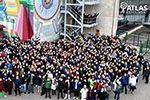Muon g-2 collaboration announces most precise measurement of the anomalous magnetic moment of the muon
 The third and final result is in perfect agreement with the with the first two results of the experiment ...
The third and final result is in perfect agreement with the with the first two results of the experiment ...Charge radius of Helium-3 measured with unprecedented precision
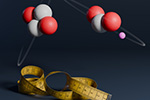 Research findings from the PRISMA+ Cluster of Excellence and the Paul Scherrer Institute published in Science ...
Research findings from the PRISMA+ Cluster of Excellence and the Paul Scherrer Institute published in Science ...JGU successful in the Excellence Strategy: Cluster of Excellence in Particle Physics approved
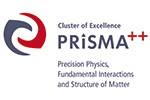 Positive vote for PRISMA++ by the Excellence Commission / Funding of up to 66 million euros for cutting-edge research in Mainz" ...
Positive vote for PRISMA++ by the Excellence Commission / Funding of up to 66 million euros for cutting-edge research in Mainz" ...JGU receives further funding for participation in the Mu3e experiment
Neutrinos are at least a million times lighter than electrons
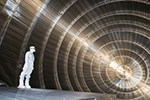 Precision scale KATRIN at the Karlsruhe Institute of Technology sets a new upper limit for the mass of neutrinos ...
Precision scale KATRIN at the Karlsruhe Institute of Technology sets a new upper limit for the mass of neutrinos ...Vacuum chamber weighing several tons delivered for the MESA particle accelerator
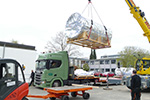 Precision scale KATRIN at the Karlsruhe Institute of Technology sets a new upper limit for the mass of neutrinos
Precision scale KATRIN at the Karlsruhe Institute of Technology sets a new upper limit for the mass of neutrinos...
Mainz physicists among winners of prestigious Breakthrough Prize in Fundamental Physics
Livia Ludhova receives the Order of Ľudovít-Štúr for exceptional contributions in the field of science
 High honor from the Slovak Republic for JGU physicist and member of the PRISMA+ Cluster of Excellence
High honor from the Slovak Republic for JGU physicist and member of the PRISMA+ Cluster of Excellence...
Anomalous magnetic moment of the muon – new calculation confirms Standard Model of particle physics
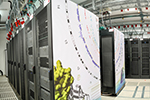 Contribution of hadronic vacuum polarization determined with unprecedented accuracy. ...
Contribution of hadronic vacuum polarization determined with unprecedented accuracy. ...Milestone for cutting-edge research in Mainz: Center for Fundamental Physics (CFP) inaugurated
 The Center for Fundamental Physics (CFP) will provide an outstanding infrastructure for the cutting-edge research of the PRISMA+ Cluster of Excellence. ...
The Center for Fundamental Physics (CFP) will provide an outstanding infrastructure for the cutting-edge research of the PRISMA+ Cluster of Excellence. ...21-ton magnet installed in new MESA particle accelerator
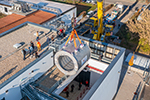 Superconducting core component for international P2 experiment installed in underground hall at a depth of ten meters. ...
Superconducting core component for international P2 experiment installed in underground hall at a depth of ten meters. ...Pierre Capel elected Fellow of the American Physical Society
 This honor recognizes his careful and creative application of few-body methods to the study of nuclear reactions involving exotic nuclei. ...
This honor recognizes his careful and creative application of few-body methods to the study of nuclear reactions involving exotic nuclei. ...NA62 experiment at CERN observes ultra-rare particle decay
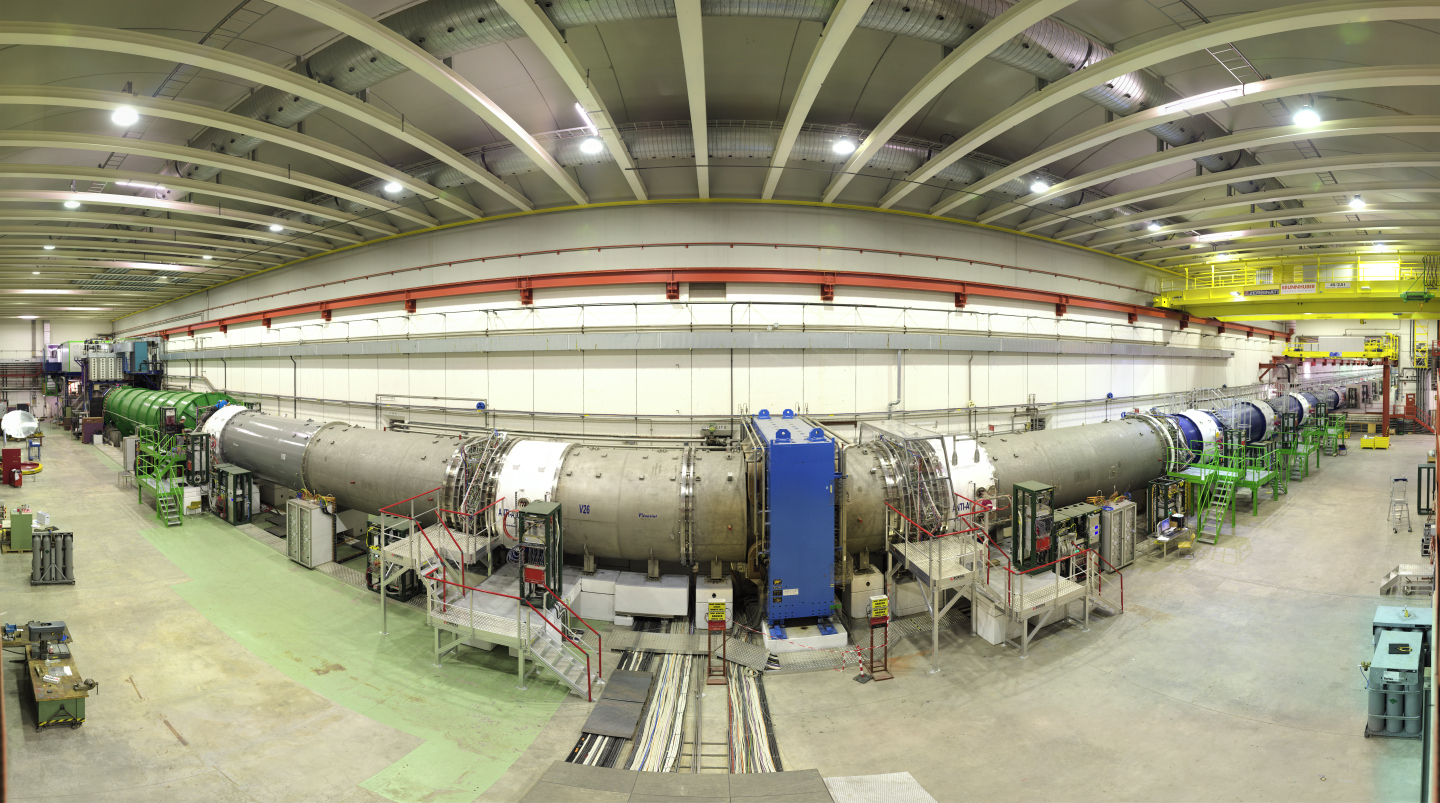 The NA62 collaboration reported the unequivocal confirmation of the ultra-rare decay of a positively charged kaon into a positively charged pion and a neutrino–antineutrino pair. Experiments including NA62 have previously measured and seen evidence of this process, but this is the first time it has been measured with a statistical significance of five standard deviations, crossing the threshold traditionally required to claim a discovery in particle physics. ...
The NA62 collaboration reported the unequivocal confirmation of the ultra-rare decay of a positively charged kaon into a positively charged pion and a neutrino–antineutrino pair. Experiments including NA62 have previously measured and seen evidence of this process, but this is the first time it has been measured with a statistical significance of five standard deviations, crossing the threshold traditionally required to claim a discovery in particle physics. ...JGU hosts annual meeting of the ATLAS Collaborative Research Center
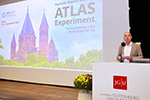 Around 120 physicists are coming together on the campus of Johannes Gutenberg University Mainz from September 10 to 13 to analyze data from the ATLAS experiment at the LHC/CERN. ...
Around 120 physicists are coming together on the campus of Johannes Gutenberg University Mainz from September 10 to 13 to analyze data from the ATLAS experiment at the LHC/CERN. ...Mainz Particle Physics Academy at JGU
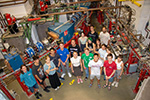 At the Mainz Particle Physics Academy, a total of 16 high school students did research at the MAMI particle accelerator. ...
At the Mainz Particle Physics Academy, a total of 16 high school students did research at the MAMI particle accelerator. ...Cold antimatter for quantum state-resolved precision measurements

Experimental breakthrough of the BASE international research collaboration / Johannes Gutenberg University involved
Why does the universe contain matter and (virtually) no antimatter? The BASE international research collaboration at the European Organisation for Nuclear Research (CERN) in Geneva, headed by Professor Stefan Ulmer from Heinrich Heine University Düsseldorf (HHU) and with the participation of Professor Jochen Walz of Johannes Gutenberg University Mainz (JGU), has achieved an experimental breakthrough in this context. It can contribute to measuring the mass and magnetic moment of antiprotons more precisely than ever before – and thus identify possible matter-antimatter asymmetries. BASE has developed a trap, which can cool individual antiprotons much more rapidly than in the past, as the researchers now explain in the scientific journal Physical Review Letters.
...
First measurement of a nuclear recoil signal from solar neutrinos with XENONnT
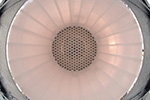
At the IDM conference in L’Aquila (IT), the XENONnT collaboration announced the first measurement of low-energy nuclear recoils from neutrinos produced in nuclear reactions inside the sun, particularly those involving the element boron. ...
Press release of the Laboratori Nazionali del Gran Sasso (INFN)
New CRC 1660: Hadrons and Nuclei as Discovery Tools

Collaborative Research Centre at JGU's Institute for Nuclear Physics seeks new physical phenomena through a better understanding of strong interaction processes. ...
Understanding the universe: SHiP experiment promises new insights into the world of elementary particles
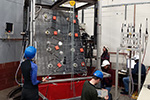
Researchers from six German scientific institutions contribute significantly to the new experiment at the CERN research center for particle physics with detector developments. ...
ERC Advanced Grant for Maarten Boonekamp in collaboration with Jens Erler and Frank Maas

New physics in parity violation: From the Thomson limit to the energy frontier. The consortium of Professor Maarten Boonekamp from Université Paris-Saclay as spokesperson and Professor Jens Erler and Professor Frank Maas of Johannes Gutenberg University Mainz has been awarded an ERC Advanced Grant for their project Zeptometry. ...
Mainz hosts the 16th "Terascale Detector Workshop"
 Born within the Helmholtz Alliance “Physics at the Terascale”, a network of German research institutes working on experiments at the Large Hadron Collider (LHC) at CERN, the Terascale Detector Workshop has now reached its 16th edition ...
Born within the Helmholtz Alliance “Physics at the Terascale”, a network of German research institutes working on experiments at the Large Hadron Collider (LHC) at CERN, the Terascale Detector Workshop has now reached its 16th edition ...
13.12.2023
Matthias Neubert named Erwin Schrödinger Visiting Scientist 2024
 Awarded for outstanding contributions to the field of theoretical elementary particle physics with a visiting professorship in Vienna ...
Awarded for outstanding contributions to the field of theoretical elementary particle physics with a visiting professorship in Vienna ...
11.12.2023
Searching for axions with the ATLAS detector
 Latest measurements provide valuable information on novel particles that could explain the anomalous magnetic moment of the muon ...
Latest measurements provide valuable information on novel particles that could explain the anomalous magnetic moment of the muon ...
11.10.2023
Powerful magnets for MAGIX
 Core components for the upcoming MESA experiment MAGIX have arrived in Mainz ...
Core components for the upcoming MESA experiment MAGIX have arrived in Mainz ...
06.10.2023
Calculation of the proton radius significantly improved
 Theoretical physicists at the PRISMA+ Cluster of Excellence present new comprehensive lattice calculations ...
Theoretical physicists at the PRISMA+ Cluster of Excellence present new comprehensive lattice calculations ...
07.09.2023
On the track of elusive neutrinos
 Project 8 experiment reaches important milestone to measure neutrino mass ...
Project 8 experiment reaches important milestone to measure neutrino mass ...
05.09.2023
Made in Germany and big in Japan: Pixel Vertex detector installed in Belle II experiment
 Concettina Sfienti's research group at the Institute for Nuclear Physics is involved in design and construction ...
Concettina Sfienti's research group at the Institute for Nuclear Physics is involved in design and construction ...
10.08.2023
Muon g-2 collaboration doubles precision with latest measurement
 Uncharted territory explored in search of new physics ...
Uncharted territory explored in search of new physics ...
20.07.2023
Marvin Schnubel receives Feodor Lynen Research Fellowship of the Alexander von Humboldt Foundation
 New theoretical model to help in the search for new physics ...
New theoretical model to help in the search for new physics ...
01.06.2023
Thorium-229: A new approach to investigation opens up a wide range of possibilities
 International research team reveals in Physical Review Research how the first nuclear transition can be excited with lasers in the visible wavelength range ...
International research team reveals in Physical Review Research how the first nuclear transition can be excited with lasers in the visible wavelength range ...
24.04.2023
New electron scattering experiment designed for the excitation of the helium nucleus raises fundamental questions about our current understanding of nuclear forces
 Theoretical predictions and new experimental data on 4He, measured with great accuracy, diverge significantly from each other ...
Theoretical predictions and new experimental data on 4He, measured with great accuracy, diverge significantly from each other ...
30.03.2023
Second ERC Advanced Grant for Matthias Neubert
 Novel theoretical predictions to advance the search for new physics at the LHC / Funding worth EUR 2.5 million ...
Novel theoretical predictions to advance the search for new physics at the LHC / Funding worth EUR 2.5 million ...
23.03.2023
Improved ATLAS result weighs in on W boson
 An improved ATLAS measurement of the W boson mass is in line with the Standard Model of particle physics ...
An improved ATLAS measurement of the W boson mass is in line with the Standard Model of particle physics ...
23.03.2023
First WIMP search results from the XENONnT experiment
 PhD student Daniel Wenz from Mainz University presents data at a seminar at the Laboratori Nazionali del Gran Sasso in Italy ...
PhD student Daniel Wenz from Mainz University presents data at a seminar at the Laboratori Nazionali del Gran Sasso in Italy ...
22.03.2023
First neutrinos made by particle collider detected
 Discovery promises to help physicists understand the nature of the universe's most abundant particle ...
Discovery promises to help physicists understand the nature of the universe's most abundant particle ...
21.03.2023
New possibilities in the theoretical prediction of particle interactions
 Team of scientists at Mainz University finds a way to evaluate highly complex Feynman integrals ...
Team of scientists at Mainz University finds a way to evaluate highly complex Feynman integrals ...
01.02.2023
Amplified search for new forces
 Special setup uses polarized rubidium and xenon as transmitter and receiver system for exotic fields ...
Special setup uses polarized rubidium and xenon as transmitter and receiver system for exotic fields ...
23.01.2023
A new model for dark matter
 Phase transition in the early universe changes strength of interaction between dark and normal matter ...
Phase transition in the early universe changes strength of interaction between dark and normal matter ...
04.11.2022
IceCube neutrinos give us first glimpse into the inner depths of an active galaxy
 Mainz-based scientists have been members of the IceCube consortium since 1999 ...
Mainz-based scientists have been members of the IceCube consortium since 1999 ...
21.10.2022
Newly discovered optical effect allows IceCube to deduce ice crystal properties
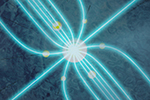 Understanding the ice: Mainz team of scientists succeeds in seeing through the diffuse ice of Antarctica ...
Understanding the ice: Mainz team of scientists succeeds in seeing through the diffuse ice of Antarctica ...
21.10.2022
The anomalous magnetic moment of the muon – a new conundrum comes to light
 New calculations based on fundamental theories deviate from the currently accepted theoretical value ...
New calculations based on fundamental theories deviate from the currently accepted theoretical value ...
11.10.2022
10 years PRISMA Cluster of Excellence at Johannes Gutenberg University Mainz
 Significant scientific success and fantastic research opportunities at the Mainz Gutenberg Campus ...
Significant scientific success and fantastic research opportunities at the Mainz Gutenberg Campus ...
Click here for the picture gallery "10 years of PRISMA" on October 10 at the Staatstheater Mainz
23.09.2022
Quantum mechanics put to the test: one and two may not equal three
 Three scientists - among them Prof. Dmitry Budker from the Mainz Cluster of Excellence PRISMA+ - propose test for hypothesis of Nobel laureate Steven Weinberg...
Three scientists - among them Prof. Dmitry Budker from the Mainz Cluster of Excellence PRISMA+ - propose test for hypothesis of Nobel laureate Steven Weinberg...
04.07.2022
After three years: start of first particle collisions at unprecedented energies at LHC
 The ATLAS detector more powerful than ever – with major contributions from Mainz University ...
The ATLAS detector more powerful than ever – with major contributions from Mainz University ...
11.04.2022
Photon-photon interactions in the Standard Model and beyond: New research unit at JGU granted DFG funding
 A pure quantum effect as the key to a better understanding of the subatomic world / New research program in Mainz bundles a wide range of expertise ...
A pure quantum effect as the key to a better understanding of the subatomic world / New research program in Mainz bundles a wide range of expertise ...
20.01.2022
Worldwide coordinated search for dark matter
 Sensor network GNOME publishes comprehensive data in Nature Physics for the first time / Nine stations in six countries involved
Sensor network GNOME publishes comprehensive data in Nature Physics for the first time / Nine stations in six countries involved
...
05.01.2022
Matter-antimatter symmetry and antimatter gravity studied at once
 BASE collaboration sets new standards / Research group from the PRISMA+ Cluster of Excellence at Johannes Gutenberg University Mainz involved in publication in Nature
BASE collaboration sets new standards / Research group from the PRISMA+ Cluster of Excellence at Johannes Gutenberg University Mainz involved in publication in Nature
...

